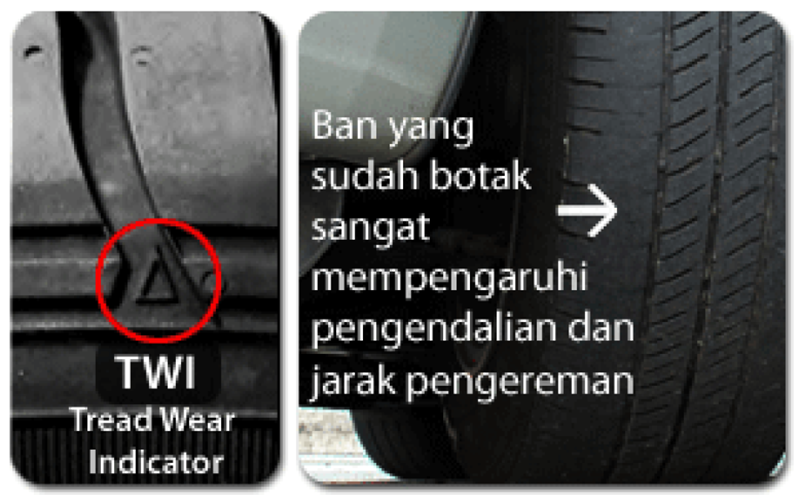125 comments
Take it from former race-car driver Johnny Unser—checking for telltale warnings of a worn-out tire is more important than you think.
“Checking your tires is like going to the dentist,” says Unser, five-time veteran of the Indy 500. “It’s something we don’t do often enough, that we put off until we absolutely have to.”
According to the National Highway Traffic Safety Administration (NHTSA), tire failure causes around 11,000 car crashes each year. Both Unser and NHTSA recommend doing a quick tire inspection once a month to see if you need new tires.
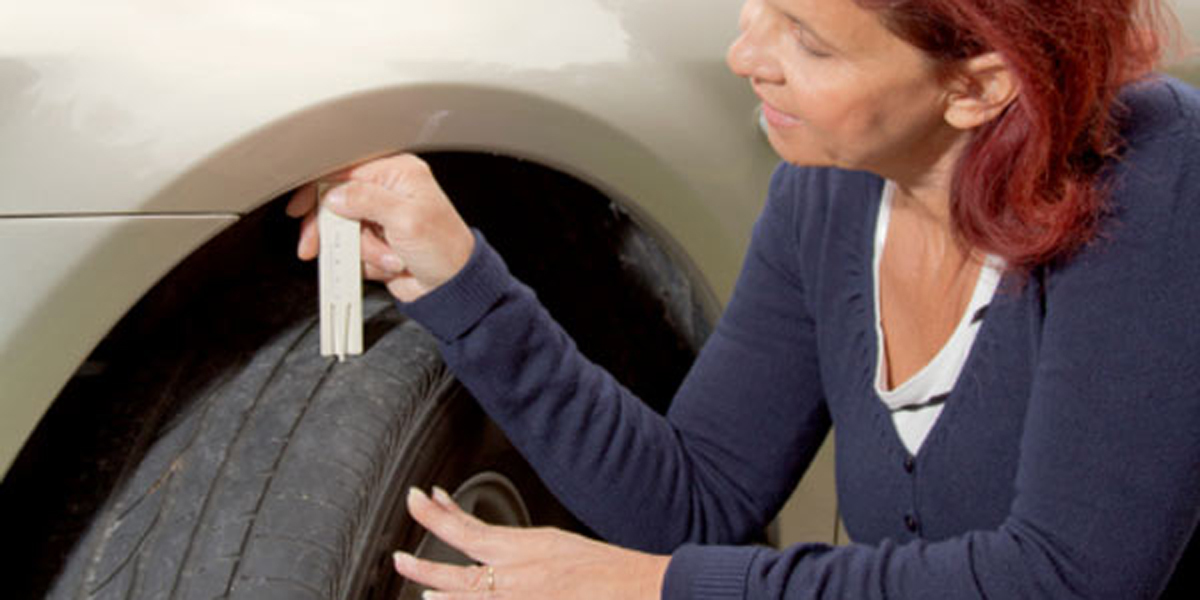 Vibration from the steering wheel could indicate suspension issues. Unser says anything less than a smooth ride means you should take your car in to the dealer.
Vibration from the steering wheel could indicate suspension issues. Unser says anything less than a smooth ride means you should take your car in to the dealer.When it’s time to replace your tires, Unser recommends doing so in pairs or all four at a time for better performance and traction and, ultimately, a safer ride.
From a flat tire to a car that won’t start, be ready for anything with GEICO’s 24-hour Emergency Roadside Service.
By Maria Carter
Next article: Top 5 Tire Myths Debunked
Looking to improve your car audio? Check out our recommendations for car stereo enhancements that won't cost a fortune.
Check out our list of 11 must-haves to keep handy in the trunk of your car to be prepared for unplanned situations.
Learn more about 7 common car noises you should never ignore, discover what each type of noise could be, and find out how you should approach getting it repaired.
Know these 5 signs that you might need new brake pads, so you can have them fixed before something goes wrong.
Read about how car recalls happen—and why it’s important to take action if your car is recalled.
Looking to clean headlights, remove bugs from your car, or polish up your car windows or dashboards? Check out these easy home solutions!
Every year in the U.S., tire-related crashes cause 200 fatalities, according to the National Highway Traffic Safety Administration. Thankfully, it’s easy to monitor your tires, and how to tell if you need new tires, with a quick video and some basic information.
The primary functions of the tread on your tires are to grip the road and to divert water that causes hydroplaning. Tires with plenty of tread can help you maintain control and reduce your chances of getting a flat. With a quick monthly check of your tread and tire pressure, you’ll know if you need to replace your tires.
Tires with plenty of tread can help you maintain control and reduce your chances of getting a flat. With a quick monthly check of your tread and tire pressure, you’ll know if you need to replace your tires.
Tread wear bars are small, raised bits of rubber that run between the tread blocks. As these bars become even with the top of the tread, it is likely time for new tires. See more about tread wear bars below.
Tires will wear down over time, even if you don’t drive much. Sunlight, heat, and chemicals used to melt snow and ice can reduce rubber flexibility, causing tires to crack, lose air, and eventually fail.
There are many factors that may cause uneven wear, which could shorten the life of your tires. Vehicle alignment, tire pressure, lack of rotation, and/or worn steering and suspension components can all contribute to this problem. To prolong the life of your tires and reduce uneven wear, consider getting them rotated at consistent intervals. At Les Schwab, we recommend getting them rotated every 5,000 milles. The pros at Les Schwab will also conduct a free visual inspection of your steering and suspension components. Schedule your free, pre-trip safety check today.
At Les Schwab, we recommend getting them rotated every 5,000 milles. The pros at Les Schwab will also conduct a free visual inspection of your steering and suspension components. Schedule your free, pre-trip safety check today.
All tires deflate slowly over time, usually about 1 PSI (pounds per square inch) per month. Check yours monthly to keep them properly inflated. If your tires continually lose air or seem to completely deflate without warning, you may need to stop by Les Schwab for tire repair or replacement if necessary. Does the TPMS (Tire Pressure Monitoring System) light often appear on your dash? This could mean your tires have developed a slow, continuous leak.
If you hit a curb, pothole or other obstacle, your tires can develop sidewall bulges due to a break of the inner liner. These bulges can rupture causing a potentially unsafe situation. If you spot a bulge on your tires, get to your nearby Les Schwab and have your tires inspected.
If you experience new vibrations or thumping while driving, it could be a sign that one of your tire/wheel assemblies is out of balance. It could also indicate a suspension issue. Stop by your local Les Schwab and our professionals will check your tires, steering, and suspension.
All tires sold in the United States today have what are called tread wear bars. The tread wear bars on your tires are there to help you see how much tread you still have. These wear bars are small, raised bars of rubber in the grooves of your tire. Look at the tread pattern and you’ll see these bars running between the tread blocks.
Look at the tread pattern and you’ll see these bars running between the tread blocks. As your tires wear, these bars will become increasingly flush with the tire’s tread. It’s important to replace your tires before this happens.
Depending on where and how you drive, and the conditions you face on the road, you might consider getting new tires before they reach that point. City driving in mild conditions may allow you to wait until the tread is closer to the tread wear bar before replacing your tires. More adverse conditions, such as rain, snow, and unpaved roads, may require you to replace your tires earlier.
An easy way to check the tread on your tires is to do the penny test. Take a penny and place Lincoln’s head in one of the grooves of the tire tread. If you can see all of Lincoln’s head, it’s time to replace the tire.
If the penny goes in enough that the tire tread is at least as deep as Lincoln’s forehead, your tires are generally considered safe and do not need replacing. Check all four of your tires when conducting the penny test.
You’ll find your next set of tires at Les Schwab. You also find our world-class customer service at a tire shop near you that cares about your safety on the road.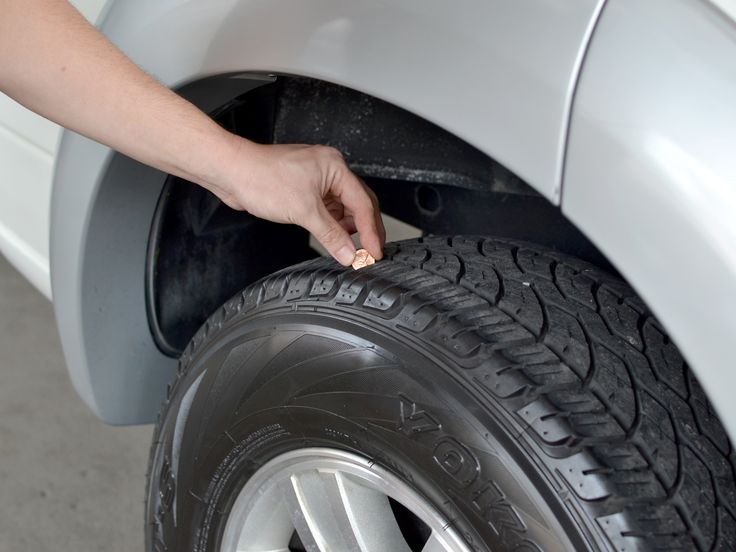
SHOP TIRES
Advanced search
Just like your feet hurt after a long walk, the tires on your car take a hit every time you drive. This is not a sign of bad driving - it is rather an inevitable fact of life. Rubber ages and wears out. And since tire damage while driving can be disastrous, you need to know when your tires are in very bad condition so you can get new ones before something goes wrong.
Of course, if you have a personal mechanic who periodically inspects your car, he will probably tell you if the tires are worn out, but there are a few obvious facts that will point you to the need for a visit to the local car service.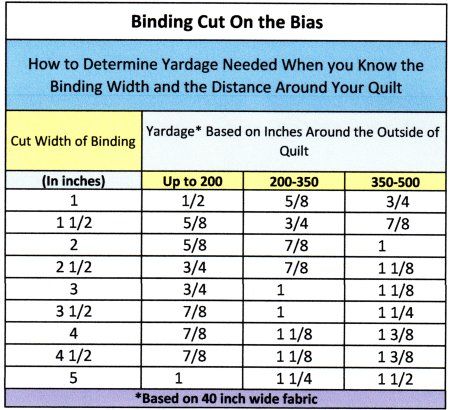
We have listed five warning signs that will tell you when it's time to buy tires.
 Use the "ruble test" above, but if lines start to appear on any or all of your tires, it's time for a tire change.
Use the "ruble test" above, but if lines start to appear on any or all of your tires, it's time for a tire change.  There are many reasons for vibrations - maybe your tires are crooked or out of balance or your shock absorbers are starting to let you down. But it can also mean that there are some internal problems inside the tires. Even if the tires aren't the cause of the vibration, the vibration itself can cause tire damage and you'll be in trouble very soon. So if your car vibrates on a normal road, take it to a mechanic. Constant vibration is almost always a sign that something is wrong.
There are many reasons for vibrations - maybe your tires are crooked or out of balance or your shock absorbers are starting to let you down. But it can also mean that there are some internal problems inside the tires. Even if the tires aren't the cause of the vibration, the vibration itself can cause tire damage and you'll be in trouble very soon. So if your car vibrates on a normal road, take it to a mechanic. Constant vibration is almost always a sign that something is wrong. So, if most of these signs apply to you, then you can start choosing a new tire in our tire catalog.
Irina Zverkova
Estimated reading time: 4 minutes
134590
RIA Novosti
Tires are one of the most important components of a vehicle to ensure driving safety.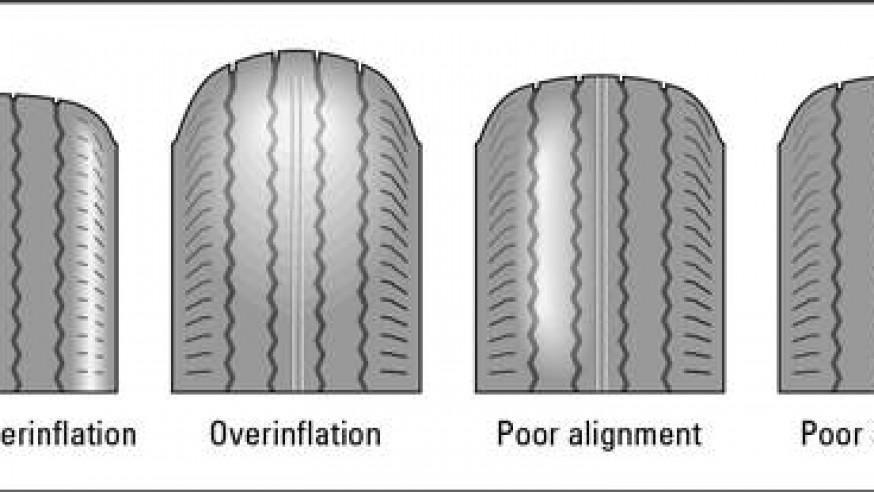 Proper use of summer and winter tires during the season improves handling and saves the car owner money. But some drivers not only postpone changing tires depending on the weather, but also continue to use the same tires for several seasons. At the same time, wheel wear becomes more and more, and the threat that the tires will not cope with holding the car increases.
Proper use of summer and winter tires during the season improves handling and saves the car owner money. But some drivers not only postpone changing tires depending on the weather, but also continue to use the same tires for several seasons. At the same time, wheel wear becomes more and more, and the threat that the tires will not cope with holding the car increases.
The tire tread is responsible for connecting the car to the road. This is the outer layer of rubber, which contains a certain pattern, suitable for different operating conditions. For summer tires, the removal of water from the contact patch is relevant, for winter tires - improved grip on slippery surfaces, for off-road tires - maximum cross-country ability. Regardless of the purpose of the tire, one of the important characteristics of the tread is its height or depth. This is the distance from the outer edge of the tire to the "bottom" of the groove. For new modern car tires, the height starts from 5 mm. For ordinary summer passenger tires, this value is 6–8 mm, for winter tires it is 8–10 mm, for SUVs it is 15–20 mm.
When the tread wears out (reducing its depth), the driving properties first of all suffer: the car is more prone to aquaplaning. Winter tires lose some of their properties, which are provided by special sipes and studs. It is important to consider that different brands and models have different rubber composition, so some wheels “run” longer. The driving style also affects wear - more aggressive starts and active braking shorten the life of the tire.
9 is considered critical for tire wear0059 tread height of 1.6 mm for summer tires and 4 mm for winter .
Height can be measured using the ruler with the depth gauge or caliper.
Those who do not have such tools can use a regular 10-kopeck coin placed in one of the grooves. If the word "kopecks" is hidden, it means that the tire is almost new and does not require replacement. If the tread covers only the floral ornament on the winter tire, then it will soon need to be changed; if it’s in the summer, the replacement will have to wait. If only the rim of the coin is hidden, you need to urgently install new tires.
If only the rim of the coin is hidden, you need to urgently install new tires.
Many modern manufacturers make wear indicator on tires (this is a protrusion perpendicular to the axis of rotation of the tire) or lay a special colored layer that becomes visible when the tire is erased. Their manifestation serves as a signal for the car owner to change tires.
It is important to monitor not only the tread depth, but also the wear uniformity . To be sure that the wheel is in good condition, it is better to measure the tread depth at different places around the circumference along the entire width of the tire. If the inner or outer part is worn out more, then the wear of the tread is taken into account at a minimum value, and it is better for the owner to check the wheel alignment / collapse of the car.
If the vehicle has frequently been driven on bumpy roads, climbed curbs, or the tires have been run half-flat, the sidewalls may have dents, cuts or cracks . It is better to check their condition at the tire shop before the wheel is flat at the most inopportune moment. For example, it may not withstand the loads in a turn, burst and provoke an emergency. You should be especially careful about such damage on low-profile tires.
It is better to check their condition at the tire shop before the wheel is flat at the most inopportune moment. For example, it may not withstand the loads in a turn, burst and provoke an emergency. You should be especially careful about such damage on low-profile tires.
On average, tires last about 6 seasons , after which it is better to replace them. Improper storage and aggressive riding can shorten the lifespan. You also need to pay attention to the expiration date of the tire and the date of its production when buying, because polymers, unlike metal, can break down and lose their properties over time.
If it is not possible to update all four tires, then, as a last resort, you can put new rubber on the drive wheels. But needs to be changed exactly a pair of , otherwise the vehicle's handling may be severely impaired.
See also: When to change tires for summer →
Next article
